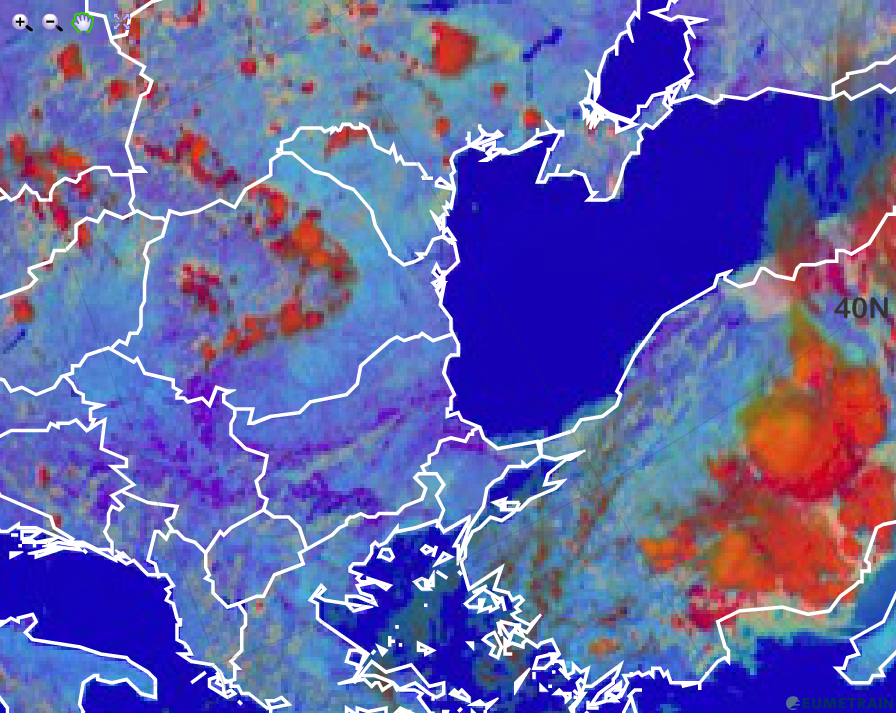Small ice particles
Small ice particles depict in orange in the Day Microphysics RGB images.
The orange colour of small ice particles in the Day Microphysics RGB images is a mixture of a strong red and a moderate green contribution.
The strongest signal comes from the VIS0.8 channel (red color beam). Ice crystals strongly reflect short wave solar radiation.
The contribution of the solar component of the IR3.9 channel is much weaker. The contribution from channel IR3.9 depends on ice/water phase as well as on drop size. Small ice crystals stronger reflect short wave solar radiation than large ice crystals. Depending on cloud physical processes, we get a range of colours from red to orange according to the intensity of the green colour contribution where orange colour indicates small ice particles.
As the cloud tops are extremely cold, there is almost no contribution from the blue colour beam.
The orange parts of convective cells contain small ice crystals which are a sign for strong updrafts and a rapid developement of the convective cell (see image below). For convective clouds with larger ice crystals (e.g. decaying CBs), the green colour beam is less intense and the orange colour turns into red.

HRV Cloud RGB from 2 June 2015, 12:00 UTC
Cloud tops of warm front are typically composed of small ice crystals. The image below shows such a warm front (orange) over Central Europe.

HRV Cloud RGB from 3 February 2016, 12:00 UTC
Explanation of the orange colour of small ice particles in the Day Microphysics RGB (see the recipe):
• Orange is the mixture of red and green colour. High reflectivity (VIS0.8) combined with moderate contribution from IR3.9 in case of small ice crystals result in orange colour.

